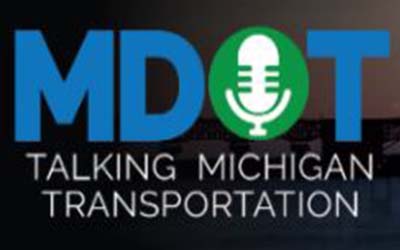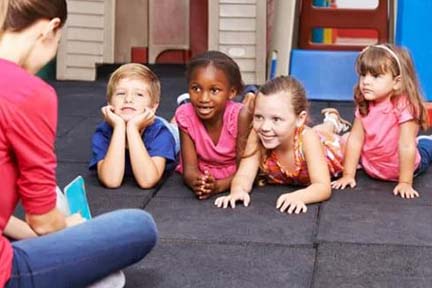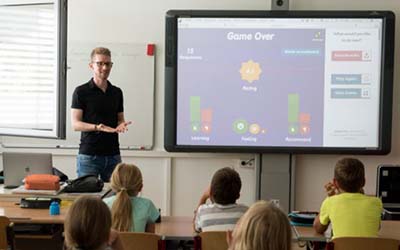
Whitmer Discusses In-Person Learning

FOR IMMEDIATE RELEASE August 15, 2022 Contact: [email protected]
Gov. Whitmer Discusses In-Person Learning, Historic Education Budget, and Upcoming School Year with Superintendents
LANSING, Mich. — Today, Governor Gretchen Whitmer spoke to more than 50 Michigan superintendents representing every region of the state and stressed the importance of in-person learning. She also highlighted the recent bipartisan education budget which includes the highest state per-student investment in Michigan history and historic investments in school infrastructure, on-campus mental health, school safety, and teacher recruitment and training. The roundtable focused on ensuring kids can continue learning in-person and districts can utilize all available resources from the budget.
“As a parent, I know how important in-person learning is to our kids, and I am using every tool at my disposal to keep students safe and in the classroom,” said Governor Whitmer. “The bipartisan education I signed last month makes historic investments to support in-person learning, where studies show they have the most success. The budget, which includes the highest state per-pupil funding in Michigan history, $250 million for school infrastructure, and funds for mental health, teacher recruitment, and school safety, will give districts the tools they need to help kids get back on track for long-term success. I applaud the dedicated superintendents across the state for their leadership through unprecedented challenges, and I look forward to working with them to make sure students have an incredible school year.”
In 2020, Governor Whitmer established the COVID-19 Return to School Advisory Council, to which she appointed educators, parents and students to provide guidance for a safe, equitable and efficient transition back to school for K-12 students. This year, Governor Whitmer created the Michigan Parents’ Council to give parents an empowered seat at the table for policymaking.
Governor Whitmer has worked collaboratively with leaders in health care and education, as well as students and parents to gain their perspectives throughout the budget process and she will continue engaging with them into the school year.
“As the state’s largest coalition of school leadership, the Michigan Association of Superintendents and Administrators is committed to delivering the highest quality education in-person in school districts across the state,” said Tina Kerr, Executive Director, Michigan Association of Superintendents & Administrators. “We are grateful for Governor Whitmer’s partnership on this effort to support our students as they return to the classroom this fall. The budget she recently signed into law makes unprecedented investments in K-12 education that will help our schools deliver the wraparound supports to ensure students can have the most successful school year yet.”
Education Budget Investments The education budget can be divided into six key sections: students, mental health, learning supports, student safety, school infrastructure, and teacher recruitment.
1) Students For our students, the highest per-pupil funding in Michigan history—$9,150 for every kid, in every public school district. Additional support for the nearly 200,000 special education students and 710,000 at-risk students in Michigan. An expansion of free preschool under the Great Start Readiness Program to 1,300 more kids—allowing the state to serve over 50,000 four-year-olds. Expanding funding for career and technical education programs by 27%.
2) Mental Health Dedicated mental health dollars for every student in every school. Increasing funding for teen centers, district mental health grants, and TRAILS, which offers training to school mental health professionals so they can better serve students with evidence-based services.
3) Teacher Recruitment Funding MI Future Educator Fellowships, which pay up to $10,000 in tuition for future Michigan educators, $9,600 stipends a semester for student teachers, and Grow-Your-Own programs that help districts put support staff on no-cost paths to become educators. Additional funding for career and technical education educators and the Troops-to-Teachers program that connects veterans with mentor teachers as they work to become certified educators. Finally, a robust investment to guarantee retired teachers have a stable, secure retirement.
4) School Infrastructure $475 million for school construction, renovations and voluntary consolidation, helping them build or refurbish classrooms, labs, and libraries. Funds to assess current state of school infrastructure, determine further funding.
5) Learning Supports An expansion of before and after-school programs to keep kids engaged. The budget offers every kid in Michigan tutoring to help catch up and get on track for long-term success, and resources for districts to develop learning pods for academically at-risk and economically disadvantaged students.
6) Student Safety Dedicated school safety dollars for every student in every school. Funds to hire more on-campus school resources officers, create an intervention system for at-risk students that brings together law enforcement, schools, and mental health professionals, and establish a school safety commission.
“Thank you everyone for making time to join us this morning. I want to thank you for your incredible leadership over the most unprecedented times. You’ve led through once-in-a-century circumstances to support our kids, and I’m really grateful for your tenacity and your perspective more than ever so that we as a state can do everything to get our kids back on track for long-term success and support the work you do every single day.
You know, the school year is starting in a few weeks, or for some of you today, will be the first normal year many of our kids have had in years. And we know students need to be in school – that’s where they get the best outcomes and it’s so important.
So, I just wanted to reach out and tell you I really appreciate the work that you’re doing. I’m proud of the fourth budget that I’ve gotten done. This most recent one I think is one of the best despite all the incredible challenges getting here, this recent bipartisan education budget that I signed makes record investments in our students and in our schools and in our staff.
As you know, for our students we got to $9,150 per pupil for every pupil in every district so we can improve the in-class experience. We’ve dedicated resources for mental health and school safety and resources for at risk and special education.
And for our schools, you know I proposed $1 billion to build and renovate but of course I had to negotiate with the legislature and ultimately, we got $250 million, which is an import investment. Whether it’s new classrooms or libraries or labs or athletic buildings, HVAC systems – not the most exciting things to spend money on, but really important now more than ever. We’re improving water quality in schools.
For our staff, we’ve got $10,000 scholarships for 2,500 Future MI Educators a year, $9,600 stipends for student educators, we’ve been able to put some resources into Grow Your Own program and putting staff onto tuition-free paths to certification.
I didn’t come up with these ideas on my own – you helped inform this budget, you helped get it passed, and you helped give us council as we’ve had to make tough decisions and unimaginable circumstances. So I appreciate you. I hope you and your students and educators have a wonderful year ahead. And I’m really excited to see how you utilize these resources to best meet the kids’ needs and the needs of your educators in your variety of districts
So, looking forward to seeing what the best practices are that you come up with and how we challenge one another and how we inform continued investment in education. So just have a wonderful school year and I’m really glad to be with you this morning.
…
Absolutely. I appreciate the question Tina, and I know it’s not unique to Michigan it’s not unique to schools, right? I mean the workforce shortage is real across disciplines. However, we knew it was looming in this space for a long time with the fall off in terms of people going into the profession, as well as retirements that have been looming. We’ve known this state was coming and it’s only been exacerbated by the COVID pandemic. So, when I highlighted a few of those expenditures that we got prioritized in our budget, that was because of the conversation that we’ve been having with all of you and experts in education. The $10,000 scholarships, the $9,600 stipends, the Grow Your Own programs, these are things that many of you suggested, and we were able to get it done.
I think this is a step toward addressing the problem that you just gave voice to Tina. I recognize that there’s many more that we’re going to have to take. And so, we welcome your counsel and suggestions. More often than not, it has wielded improved outcomes, and we’ve gotten your thoughts codified and put it into practice. So please keep them coming and know that we are eager partners in trying to make sure that we’ve got great people – whether it’s driving the kids to school or serving them lunch or it’s in the administration offices, and certainly from the classroom. It’s crucial. And so these are some steps we’ve taken, but we recognize that there’s more work to do here and we’re eager to partner with you to make sure that we’re all successful in getting this done. Tina, you alluded to it but Stephanie Odea from my team will be sticking around for the remainder and I’m just grateful for her help to guide the work that we’re doing on the inside, but I know how close that relationship is with all of you. So that’s why we want to make sure that this is not just a moment, but a continued conversation that we’ve all been having and will continue to have.”
|


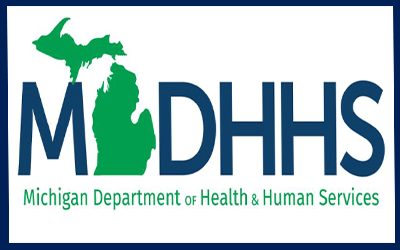

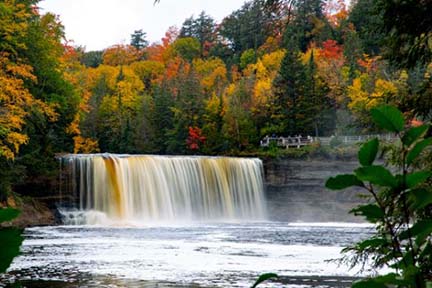

 Aug. 15, 2022
Aug. 15, 2022 His accomplishments are many. Olson, who oversees a
His accomplishments are many. Olson, who oversees a  The department’s natural resources deputy, Shannon Lott, said that since Olson joined the DNR in 2005, he has approached challenges and opportunities within the recreation world in his own way.
The department’s natural resources deputy, Shannon Lott, said that since Olson joined the DNR in 2005, he has approached challenges and opportunities within the recreation world in his own way.

